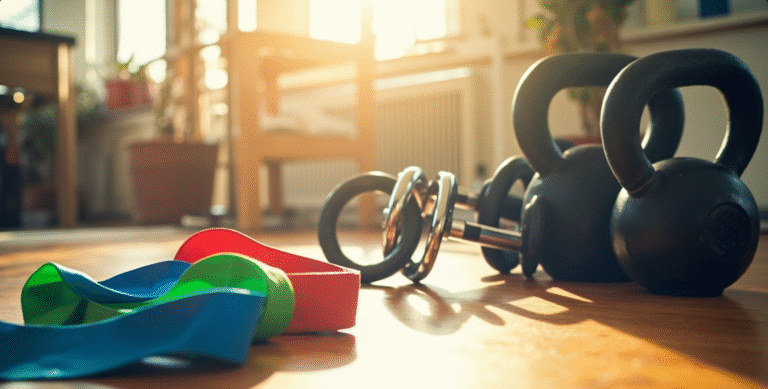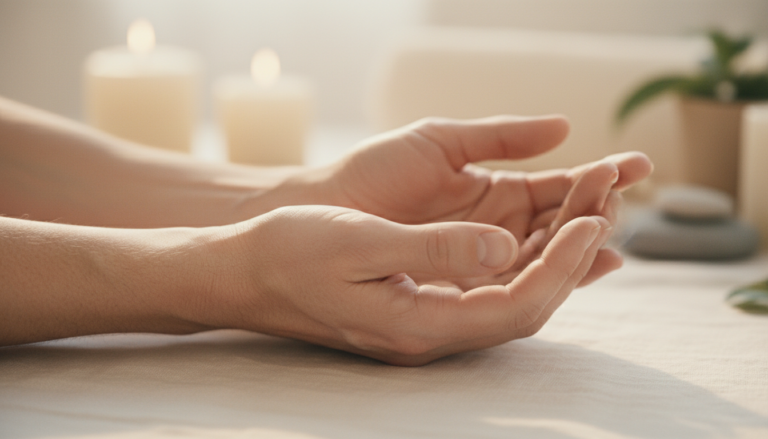Eight Wellness Dimensions: Your Complete Guide to Holistic Well-Being
A friendly, research-backed guide to the eight wellness dimensions with simple habits, humor, and a practical plan to boost holistic well-being.
If you’ve ever “done everything right” at the gym, choked down a suspiciously green smoothie, and still felt off, you’re in good company. The eight wellness dimensions are the missing context—a holistic well-being framework that zooms out beyond abs and step counts to include your emotions, money, work life, relationships, spiritual meaning, environment, and curiosity.
When you see the whole picture, it suddenly makes sense why one great habit isn’t fixing everything—and which small change might actually move the needle. When one leg gets wobbly, the whole table tilts. I’ve lived this—on paper I looked “fit,” but my money was a mess, my social battery was fried, and I couldn’t figure out why everything felt hard.
Once I understood the importance of eight wellness dimensions (and actually putting those knowledge into practice), things finally clicked the way they should.
When we say “holistic,” we don’t mean your life has to be perfectly balanced all the time. Real life isn’t a pie chart where every slice is equal. Holistic just means you’re looking at the whole picture—body, mind, relationships, money, work, environment, purpose—and aiming for harmony, not perfection.
Think of it like tuning a guitar. Not every string is at the same note, but together they sound good. Some days you tighten one string (sleep), other days another (budget, boundaries, a walk with a friend). Those tiny adjustments—those small wins—add up. Over time, they compound into a life that feels steadier and more you, without the pressure to “do it all” at once.
What Are the Eight Wellness Dimensions?

The “eight wellness dimensions” model is widely promoted by mental health and public health organizations—including SAMHSA‘s Eight Dimensions of Wellness—because it reflects how people actually live. You’re not a single metric. You’re a system. The eight wellness dimensions are:
- Physical
- Emotional
- Social
- Intellectual
- Spiritual
- Occupational
- Environmental
- Financial
Each dimension influences the others. Fixing your diet helps, but it won’t magically heal financial stress or a joyless job. Likewise, getting promoted won’t relieve anxiety if sleep and boundaries are on fire. The power of the eight wellness dimensions is perspective—you can see where one small change might create positive ripples everywhere else.
Why One Dimension Can Tip the Whole Table
Imagine a table with eight legs and apply these scenarios: If financial stress is stressing you out and not allowing you to get some sleep(physical hit), you become short-tempered even with your partner (social hit), and you begin to question your life and the choices you made at 2 a.m. (spiritual wobble). That spiral isn’t a personal failure; it’s a systems problem. The fix isn’t perfection—it’s harmony. If you strengthen the leg that is wobbling the most, you will notice that the table eventually stabilizes.
I had to learn this the hard way. There was a season when my physical wellness looked great—gym five times a week, meal prep, protein everything—but I felt empty and stressed. My bank account was chaos, I’d lost touch with close friends, and work felt like a loop. Once I used the eight wellness dimensions to scan the whole picture, it was obvious why I felt off. I didn’t need to add another workout. I needed one honest conversation, a basic budget, and better sleep.
Small, consistent actions in a few targeted areas beat heroic overhauls every time.
Physical Wellness: Build Your Energy Foundation
Physical wellness is about supporting your body so it can support the rest of your life. Not ultramarathons. Not pain-as-a-personality. Just sustainable care that gives you energy on purpose.
- Fuel that actually serves you. No need to chase trends. Aim for simple, steady habits: a fruit or veg with meals, protein you don’t hate, and water before coffee. Batch-chop on Sunday if it helps. If it doesn’t, don’t.
- Movement that doesn’t feel like punishment. The CDC links regular physical activity with 30–40% lower risk for chronic disease. That’s not a bootcamp commercial; that’s a nudge to walk at lunch, take the stairs, or dance badly to ‘90s hits while your pasta boils. Your body doesn’t care if you look silly. It cares if you move.
- Sleep is a non-negotiable. Seven to nine hours supports immune function, mood, memory, and stress resilience. Poor sleep makes everything harder and everyone more annoying. Ask me how I know.
- Preventive care without avoidance. Annual checkups, age-appropriate screenings, and not waiting six months to ask about a symptom. It’s maintenance for the only body you get.
Do Now
- Drink one glass of water before your first coffee.
- Walk 10 minutes after one meal today.
- Set a consistent bedtime and phone “lights out” 30 minutes earlier.
Build Next
- Schedule a long-postponed checkup or screening.
- Add one strength session per week (bodyweight counts).
- Plan three go-to weeknight meals that take under 20 minutes.
Watch Out For
- All-or-nothing thinking (if it’s not perfect, it “doesn’t count”).
- Overtraining as stress relief. Your nervous system needs recovery, too.
Emotional Wellness: Master Your Inner Weather
Emotional wellness is about noticing, naming, and navigating your feelings without letting it take control of your entire life. When you regulate emotions, your decision-making improves, relationships calm down, and hard days don’t derail your week.
A long-running Harvard study—the Grant Study—has tracked adult development for decades and repeatedly found emotional health and quality relationships predict better life outcomes than status or income alone. Translation: inner steadiness is not just “nice to have.” It’s central to holistic well-being.
Do Now
- Two-minute mood check-in. Name it to tame it: “I’m anxious and tired.” No judgment.
- 4-7-8 breathing for one minute before tough tasks.
- Text a friend: “Thinking of you. How’s your week?” Social support buffers stress.
Build Next
- Micro-journaling: two sentences a day for two weeks. Patterns will pop.
- Create a coping list on your phone: walk, stretch, call X, 5-minute mindfulness.
- Try one therapy intro session. You don’t need a crisis to get support.
Watch Out For
- Catastrophizing (“It’s all ruined.”).
- Coping via self-sabotage (late-night doom-scrolls, impulse buys, texting exes).
Social Wellness: Relationships That Actually Nourish You
Loneliness isn’t just a mood—it’s a health risk. A meta-analysis of 148 studies led by Julianne Holt-Lunstad found social isolation increases mortality risk on par with well-known risks like obesity and smoking (PLOS Medicine, 2010). The upside: strong social ties can boost longevity by about 50%. Not bad for something that looks like coffee and phone calls.
Do Now
- Schedule one 30-minute catch-up with someone who “gets” you.
- Put your phone face-down during your next conversation.
- Unfollow accounts that trigger comparison spirals.
Build Next
- Create a tiny ritual: Wednesday walks with a neighbor or Sunday dinners.
- Join one values-aligned group: hiking club, faith group, community class.
- Practice one healthy boundary this week: “I can do Friday, not Saturday.”
Watch Out For
- Confusing busyness for connection.
- Saying yes out of guilt and resenting it later.
Intellectual Wellness: Keep Your Mind Curious and Alive
Intellectual wellness is ongoing learning, creativity, and flexible thinking. The MacArthur Foundation’s Study of Successful Aging showed continued intellectual stimulation correlates with higher life satisfaction and delayed cognitive decline. In other words, novelty nourishes.
Try the 30–30–3 Method
- Learn 30 minutes (podcast, course, book).
- Apply 30 minutes (practice, teach, build).
- Capture 3 takeaways in a notes app.
Do Now
- Replace one commute scroll with a topic-based podcast you’re curious about.
- Read 10 pages of something outside your usual genre.
- Write one paragraph about an idea that challenged you this week.
Build Next
- Pick a micro-skill and practice twice a week for 8 weeks (e.g., chord transitions, Excel pivots, sketching).
- Join a discussion meetup or book club. Iron sharpens iron.
- Keep a “curiosity list” and pick one item to explore monthly.
Watch Out For
- Consuming endlessly without creating.
- Perfectionism that kills playful learning.
Spiritual Wellness: Meaning, Values, and the Bigger Picture
Spiritual wellness isn’t a box you tick with crystals or a weekend of enforced silence—unless that genuinely helps you. It’s about living in alignment with your values and feeling like your life points somewhere on purpose. When your actions match what you believe, everything else gets a little steadier.
There’s solid research behind this, too. Studies from places like the University of Michigan have found that a sense of meaning and simple spiritual practices—think gratitude, prayer, mindful stillness, or time in nature—are linked to better mental health, stronger resilience, and more hope when life gets messy. Translation: purpose helps you bounce, not break.
Do Now
- Values check-in: Write your top five values. Circle one you’re living well and one you’re neglecting.
- Two-minute gratitude scan before bed—three specifics, not generic “family/health.”
- Five minutes of stillness: breath, prayer, or silence in your parked car counts.
Build Next
- Sunday “alignment question”: Does next week’s calendar reflect what I value?
- Nature sit-spot: 10 minutes outdoors, 3x/week. Note what you notice.
- Quarterly service: volunteer in a setting that connects to your values.
Watch Out For
- Living on autopilot; saying “yes” to misaligned commitments.
- Treating spirituality like an all-or-nothing identity instead of a practice.
Occupational Wellness: Satisfaction, Autonomy, and Growth
Occupational wellness is about meaning, growth, and sane boundaries in how you spend your working hours—paid or unpaid. Gallup’s research on engagement shows that purpose, strengths-use, and recognition correlate with productivity and lower burnout. A paycheck matters, but so does how it feels to earn it.
Do Now
- Name your “most meaningful 10%” at work. Do more of that this week.
- Set one boundary: a stop time, a real lunch, or no Slack after 7 p.m.
- Give one genuine compliment to a colleague. Positivity compounds.
Build Next
- Strengths audit: Ask three peers what they rely on you for. Pattern-match.
- Propose a small stretch project aligned with your strengths.
- Book a career conversation with your manager (or yourself): What’s next?
Watch Out For
- Golden-handcuff stagnation—high pay, low purpose, rising dread.
- Confusing overwork with impact. They’re not the same.
Environmental Wellness: Spaces That Support Your Life
Your environment either restores you or drains you. The Global Wellness Institute notes links between healthy environments and lower mental distress and respiratory illness. You don’t need a renovation—micro-tweaks help.
Do Now
- Open windows for 10 minutes today. Fresh air, fresh brain.
- Clear one surface: nightstand, desk corner, kitchen catch-all.
- Add one plant (or a low-maintenance fake if you’re a plant assassin—no shame).
Build Next
- Light upgrade: warmer bulbs for evening, bright task light for work.
- Noise hygiene: earplugs/white noise at night; “focus playlist” by day.
- Digital declutter: tidy your laptop desktop and unsubscribe from 10 emails.
Watch Out For
- Using shopping as a substitute for serenity.
- Working from bed (your sleep will notice).
Financial Wellness: Calm, Control, and Fewer 2 A.M. Money Spirals
Financial wellness isn’t about being rich; it’s about clarity, control, and less ambient dread. The 2023 PwC Employee Financial Wellness Survey found financial stress is linked with lower productivity and higher absenteeism. Money stress leaks into sleep, mood, and relationships—ask any couple who’s argued about credit cards.
Do Now
- Track spending for seven days—no shame, just data.
- Automate $25/week to a starter emergency fund. Small is still smart.
- Create a “money hour” once a week to check balances and pay bills.
Build Next
- 3-bucket budget: Needs, Wants, Future (savings/debt). Keep it simple.
- Build to $1,000 emergency cushion, then one month of expenses.
- Learn one investing basic (index funds, fees, time horizons). Library > hype.
Watch Out For
- Comparing your behind-the-scenes to someone else’s highlights.
- Delaying help. A session with a nonprofit credit counselor can be game-changing.
Create Your Personal Wellness Plan: Start Small, Win Often

Here’s where the eight wellness dimensions become your action plan. No 30-step routines. No perfection traps. Just sustainable, human steps toward holistic well-being.
Step 1: Snapshot Your Eight Wellness Dimensions Rate each dimension 1–10 based on how supported it feels today. Gut answers are fine. Circle the two lowest and the one you feel most motivated to tackle.
Step 2: Pick Tiny, Specific Habits For each chosen dimension, pick one “Do Now” from above and one “Build Next” you’ll start in two weeks. Write them where you’ll see them: calendar, notes app, sticky note on your coffee machine.
Step 3: Stack Habits on Existing Routines
- After I brush my teeth (anchor), I’ll fill a water bottle (physical).
- When I park after work, I’ll do 60 seconds of deep breathing (emotional).
- Every Wednesday lunch, I’ll text one friend (social).
Step 4: Track Without Obsessing Use a simple checklist or habit app. Aim for 70–80% consistency. Progress is the goal, not a perfect streak.
Step 5: Reflect Monthly
- What helped most?
- Where did I get stuck?
- What one tweak would make this easier?
Remember: harmony over balance. You’re tuning an instrument, not building a museum exhibit.
Common Obstacles (and Friendly Fixes)
- “I don’t have time.”
- Shrink the habit to two minutes. Two minutes of stretching. One lap around the block. A single gratitude line. Momentum beats mythical free time.
- “I can’t afford wellness.”
- Walking is free, library cards are magical, and basic mindfulness costs nothing. Start with zero-dollar moves; add paid options later if you want.
- “I need the perfect plan first.”
- Perfection is just fear in a tuxedo. Start messy. Rewrite later.
- “People will push back on my boundaries.”
- Some will. Set them anyway. Respectful relationships will adapt.
- “I fell off the wagon.”
- Wagons are circular. They come back around. Reboard without drama.
FAQ: Short Answers to Big Questions
Do I need perfect balance across all eight wellness dimensions?
Nope. Aim for personal harmony. Strengthen what’s weak, protect what’s strong, and let wins ripple outward. That’s how the eight wellness dimensions actually help in real life.
How long until I feel better?
Many notice shifts in 2–3 weeks (sleep, mood, small energy bumps). Sustainable changes typically compound within 8–12 weeks. It’s compound interest, but for your well-being.
Can one weak dimension really derail the rest?
Yes. Financial stress can wreck sleep and relationships; poor sleep fuels anxiety; isolation worsens everything. That’s why a holistic well-being framework matters.
What if I have chronic illness or caregiving demands?
You can still improve wellness by adapting goals—gentler movement, more recovery, extra social support, streamlined environments. You get to define “better” for your context.
How do I keep this from becoming another abandoned plan?
Keep habits tiny. Tie them to existing routines. Review monthly. And when life happens, return to your smallest step. The eight wellness dimensions are a lifelong map, not a race.
Wrap-Up: Your Next Best Step
The power of the eight wellness dimensions is simple: they give you a full, honest picture—and the freedom to choose the smallest lever with the biggest ripple. Holistic well-being isn’t a 5 a.m. club or a willpower contest. It’s a friendly, practical truce with your life—one small action at a time.
If you take nothing else from this guide to the Eight Wellness Dimensions: Your Complete Guide to Holistic Well-Being, take this:
- Pick two dimensions that wobble most.
- Choose one tiny habit for each.
- Track weekly, reflect monthly, and keep it human.
I’m raising my mug to your first step—maybe a walk after lunch today, a text to a friend, or setting your phone to sleep 30 minutes earlier. Small doesn’t just count. Small is how real life changes.
References woven into the guide
- SAMHSA: Eight Dimensions of Wellness overview and resources: SAMHSA
- Physical activity benefits and guidelines: CDC
- Social connection and mortality (Holt-Lunstad et al., 2010): PLOS Medicine
- Harvard Study of Adult Development (Grant Study) insights: Harvard Gazette
- MacArthur Study of Successful Aging summary: MacArthur Foundation (see reports on successful aging and cognitive health)
- 2023 PwC Employee Financial Wellness Survey: PwC
Now it’s your turn. Which dimension gets your next tiny win?







